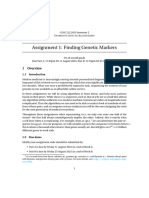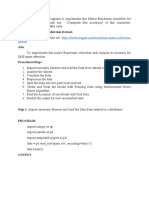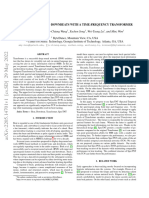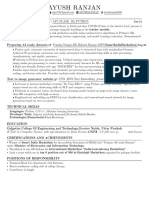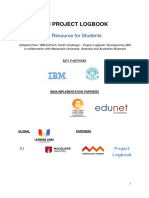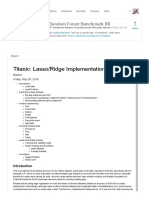0% found this document useful (0 votes)
87 views34 pagesDNA Sequencing With Machine Learning
This document discusses using machine learning classifiers to predict gene function from DNA sequences. It introduces using k-mers to represent DNA sequences as bags of words that can be analyzed using natural language processing and machine learning techniques. The document walks through preparing human, chimpanzee and dog DNA sequence and label data, using k-mers and CountVectorizer to represent the sequences as word counts, splitting the human data into train and test sets, training a multinomial naive Bayes classifier on the k-mer counts, and evaluating the classifier's performance on the test set.
Uploaded by
esraamohammed1112000Copyright
© © All Rights Reserved
We take content rights seriously. If you suspect this is your content, claim it here.
Available Formats
Download as PPTX, PDF, TXT or read online on Scribd
0% found this document useful (0 votes)
87 views34 pagesDNA Sequencing With Machine Learning
This document discusses using machine learning classifiers to predict gene function from DNA sequences. It introduces using k-mers to represent DNA sequences as bags of words that can be analyzed using natural language processing and machine learning techniques. The document walks through preparing human, chimpanzee and dog DNA sequence and label data, using k-mers and CountVectorizer to represent the sequences as word counts, splitting the human data into train and test sets, training a multinomial naive Bayes classifier on the k-mer counts, and evaluating the classifier's performance on the test set.
Uploaded by
esraamohammed1112000Copyright
© © All Rights Reserved
We take content rights seriously. If you suspect this is your content, claim it here.
Available Formats
Download as PPTX, PDF, TXT or read online on Scribd
/ 34










































